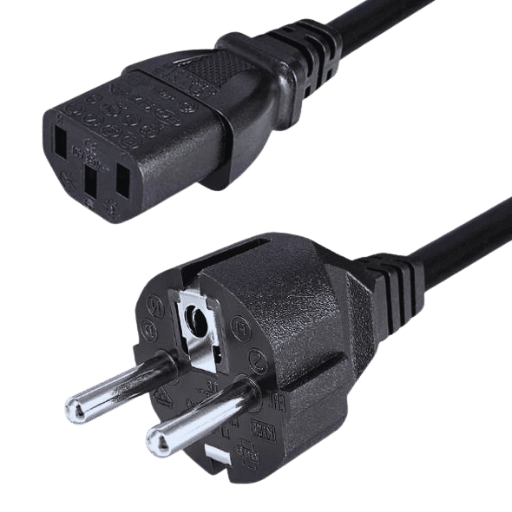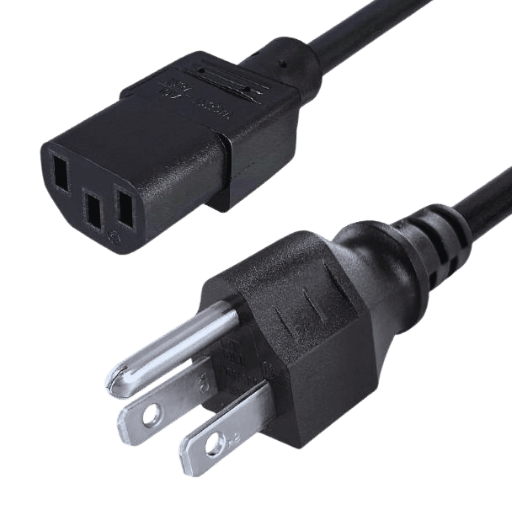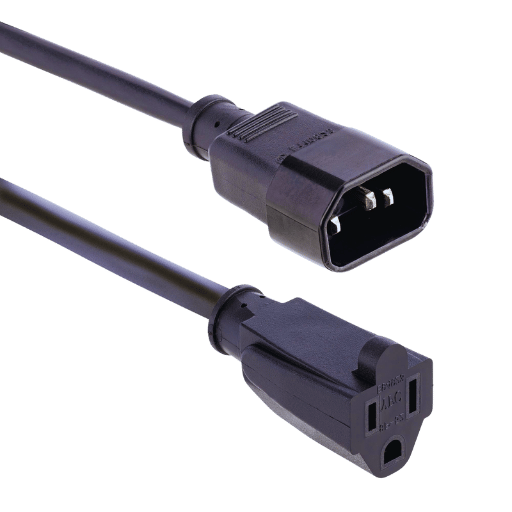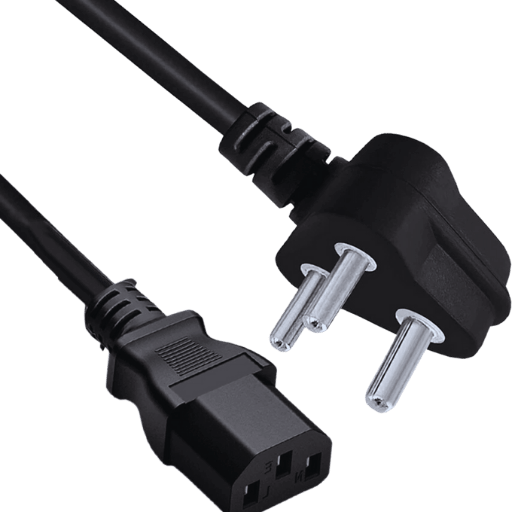Picking the correct power cord is essential to make sure your electronic devices last long, work efficiently and are safe. It can be hard to decide which among the many options available in the market suits what you need best. This article will provide a complete guide on how to select wisely. We shall delve into voltage rating, ampacity, insulation type, connector types, and industry standards, which are some of the main things that should be considered. Whether it’s personal gadgets industrial machinery, or any other device with specific requirements, knowing these important details will enable one to pick out a power cord that is suitable both for them and meets regulatory compliance.

AC power cords are offered in different types that aim at meeting different electrical needs and standards. Among the most common AC power cords are NEMA, IEC, and proprietary connectors. NEMA connectors are widely used in North America and are available in several designs like the NEMA 1-15 for household purposes, while NEMA 5-15 is used with most general-purpose equipment. IEC connectors such as the IEC 60320 series have global recognition and are commonly used with computers and office equipment, among other electronic devices, while proprietary connectors represent special configurations made by manufacturers to fit particular requirements of unique applications. It is important to know these types so that you can ensure your electronics setup is compatible and adheres to regulations.
Extension cords are a very useful tool that temporarily allows electrical devices to be powered from far away. However, choosing the right extension cord involves considering some technical parameters so as to ensure safety, efficiency and compliance with standards. Here are some of these factors:
To ensure that we pick on those extension cords that will best serve our needs in line with safety regulations, we must be ready to identify evaluate all these technicalities beforehand.
When it comes to choosing the right power cord connector, there are several things you need to keep in mind:
With these considerations taken into account one can confidently choose an appropriate power cord connections suitable for their needs ensuring both safe use and efficiency.

When choosing electric cables for household appliances, you should keep in mind the following points:
By following these guidelines, you will select an electrical cable that guarantees the secure, efficient and dependable operation of your home appliances.
When choosing electrical cords for home use, it is important to consider UL (Underwriters Laboratories) certification. This certification means that the product meets strict safety and performance standards set by a third-party organization whose main mission is testing products for their safety. Electrical cords with a UL mark have gone through extensive tests that show their ability to operate without danger under normal conditions of use.
Some of the technical parameters tested during UL certification are:
The reason why people should go for electrical cords certified under UL is because it assures them that these items were thoroughly examined before being released into markets hence reducing chances of electrical accidents within residential areas.
To avoid danger and wastage of energy, there are many things to consider when choosing a power cable for appliances with high wattage. First, amperage rating is key as it should match or be higher than that of an appliance to prevent overheating and probable causes of fire. In addition, if you have devices like these, ensure that their cords are low gauge numbers (higher gauges) since this means they have thicker wires capable of handling large amounts of current better than those with higher gauge numbers would do.
Moreover, shorter lengths also matter; therefore, go for them whenever possible because the voltage drop across long cables is significant, leading to a loss in power supply. Another important factor one needs to look out for in such cables is the material used during insulation. Heavy-duty PVC or rubber should be used so that it can withstand temperature variations as well as other environmental stresses without wearing off easily over time, besides being resistant to these conditions normally experienced within different areas where appliances may be employed.
Apart from this, another thing that can help greatly when selecting cords would be checking if they have been approved by relevant authorities like Underwriters Laboratories (UL) or Electrical Testing Labs Inc.(ETL). Such certifications indicate compliance with various safety and performance standards set up within the industry, hence ensuring users’ confidence while using them together with their devices, knowing very well that everything has been done right from manufacture up until distribution stages inclusive. Finally, one must also consider compatibility between plug types on equipment being powered and outlet configurations provided for within a building’s wiring system, among others, since failure to do so might result in loose connections, which could eventually lead to short circuits, thereby causing fires, especially where there happen to be inflammable materials nearby.
It is essential that people consult user manuals provided alongside appliances where they can find information about required power levels expressed in watts or amperes, among many other details about any particular device, which could come in handy during this process, thus making sure everything goes well without any hitches whatsoever. People should take these considerations seriously so that they may end up selecting appropriate power cords for their appliances with higher power ratings to prevent accidents due to electrical faults.

Minimizing voltage drop and power loss is the main point to consider when assessing extension cords. For higher-powered appliances, shorter cords, such as 6 feet, are better because they decrease these problems, which makes sure that the device operates efficiently and safely. Although if you need to go farther than a 6 ft reach, then use a 10ft cord with an appropriate gauge capable of carrying electricity without much power deficit over the extended distance involved, but in case of even longer cables, remember to choose one with lower gauges (thicker wires) so that enough current can still flow through it. Always ensure safety first while selecting cord length based on what is required for performance.
To make sure that an extension cord will operate efficiently and safely, it is important to choose the right gauge. The gauge measures the diameter of the wire in American Wire Gauge (AWG). Lower AWG numbers mean thicker wires that can carry more current over longer distances with less voltage drop. Here are recommended gauges for different uses:
In conclusion, you need to consider how much current an appliance draws, how long your extension cord should be, and what level of voltage drop is acceptable when picking out which gauge/size wire should be used with any given application. Follow manufacturer specifications as well as safety guidelines when selecting electrical wiring devices like extension cords.
A power cable splitter has many benefits that can greatly improve the functionality and convenience of your electrical system. First, it allows you to plug multiple devices into one outlet. This makes it ideal for areas with limited electrical outlets as it saves a lot of energy at once.
Secondly, power cable splitters enhance cable management by merging power sources together in one place. Not only does this make the entertainment area tidy or workspace but also simplifies troubleshooting and maintenance since all connections become more reachable.
Finally, use of power cord splitter enhances safety. Majority good quality splitters have built in surge protector which prevents your gadgets from being destroyed by electric surges or power spikes that come with electricity supply systems. This feature is especially important if you want to protect sensitive electronics and ensure long life span for equipment.
Power cord splitters should be considered useful tools for efficient and safe electrical management because they optimize outlet utilization, promote organization, and provide extra protection against surges, thus saving more energy at once.

To prevent electrical cords from overloading, it is important to know how much power the appliances you intend to connect use. Confirm that the sum of all devices’ wattages does not go beyond what a wire should handle at most. Use wires according to their ratings for environments where they will be employed, e.g., heavy-duty or outdoor wires for demanding gadgets. Further, avoid daisy-chaining multiple extension cords/splitters, as this may cause overheating, which could lead to fires. Regularly check whether cables are worn out, i.e., torn or otherwise damaged, and replace them immediately so that they continue working safely. These recommendations greatly help in minimizing instances of overloads thereby guaranteeing safe usage of electric cords.
Electrical safety can be ensured if cords and plugs are checked regularly. To begin with, the entire length of the cord should be visually examined for signs of wear, such as fraying or cracking where internal wires may be exposed. The plug ends also need to be looked at closely because they get worn out easily.
Technical Parameters to Consider:
Powerful cable management is necessary for security and maintaining orderliness in a workspace. Here are the best practices:
By following these tips you will be able to keep things well arranged as well as reduce hazards thus creating an accident-free environment while also extending the lifespan of your electrical appliances.

If you perceive any observable damage like splits, frays or wires showing through, then it is time to change the power cord. Besides that, whether the cable gets too hot to handle while being used, smells like its burning and causes frequent power fluctuations; these are all definite signs that it needs replacement. A further reason for replacing cords is when they have been folded so much or smashed together that their inner wires get damaged. You must keep your cords in excellent condition if you want electrical safety and efficiency around where you live or work.
The right replacement AC power cord should be chosen by considering some important factors to make sure it is compatible with and safe for your device. Here are a few things that should be taken into account:
Voltage and Current Rating: The voltage (V) and current (A) ratings of the replacement cord must match those stated by the manufacturer of the device being powered. Usually, these details can be found on either the original power cable or the equipment itself. For instance, if my gadget needs 120 volts at 10 amperes then I need to get exactly this kind of wire.
Connector Type: Different devices use different connector types such as:
Wire Gauge: American Wire Gauge (AWG) rating shows how thick wires are which in turn indicates their capacity for carrying current – lower numbers mean thicker wires capable of handling more power; so normally 16 AWG cords would suffice while higher-powered machines might require 14 or even 12 AWGs.
Cord Length: Measure the distance between where you want to place your device from an outlet and buy a cable that has length slightly greater than this distance but not too long because longer cables lead to voltage drops which may affect performance, especially when dealing with sensitive electronics like computers or audio systems whose inputs are susceptible to signal degradation caused by resistance encountered along conductor strands within lengthy cables during transmission over DC electrical supply lines connecting them together through wall sockets separated by significant distances.
Insulation & Jacket Material Used: Make sure insulation materials used in making such cables meet recommended standards as well as being rated either indoors (SJ, SVT) or outdoors (SJO, SJT). High-quality jackets made from tough stuff help prevent wear-tear situations besides enhancing the safety features associated with them.
Certification: Always check if a power cord has been certified safe by relevant bodies like UL (Underwriters Laboratory), CSA (Canadian Standards Association) or ETL (Intertek).
Considering these technicalities will enable you to choose the best replacement power cable for your electrical device, thus ensuring consistent performance while keeping it safe.
To ensure the safest possible power cord replacement, follow these steps while keeping in mind that their purpose is to minimize hazards and guarantee the correct functioning of an appliance. First, it’s necessary to turn off and unplug a device from its current power source so as to avoid electric shock. If a cord can be accessed or removed easily, then do so; otherwise, use screwdrivers or other appropriate tools for hardwired cords by gaining entry into the internal connections. In case you may need it later on, always make sure to take photographs or write down notes about how wires were connected before removing old ones.
Afterward attach new power cord onto a device while adhering same wiring configurations seen through disassembling process but also ensure that every joint is tightly fastened without leaving any bare wire hanging loosely. Place back any coverings or panels which could have been taken off during this procedure and bind up surplus length with cable ties/clips so as not to cause tangling or blockage.
Ultimately, check the reliability of the substituted power supply line by inserting it into the appropriate socket and then switching on the equipment being worked upon; if need be, closely observe such an appliance for overheating, among other abnormal signs, during usage. All should go well if everything else works fine, too, thus marking the end of the replacement. Always consult safety guidelines provided in user manuals and call experts where necessary to avoid accidents caused by ignorance about the different stages involved in changing power cables.
A: Take into account the power requirements of your device (e.g., voltage, amperage), its connector type (such as C13, C7, or NEMA 5-15P), and how long the wire should be. Make sure that it complies with electrical safety and compatibility standards.
A: No, you cannot. You must use the right power cable that fits the connector type (for example, most desktop computers require a C13 power cable) and meets voltage/amperage requirements specified by your computer’s PSU.
A: A two prong plug consists of only two pins used to connect with an electrical outlet; they are commonly found on appliances without grounding needs. On the other hand, three prong outlets have additional protection against shock provided by grounding pin.
A: Look over some specifications about your Samsung TV, such as what kind of connectors it has or what power ratings it demands. Most TVs will need specific types of cables, like those having C7 or C13 connectors; also, make sure that 125V or certain current values match the required values given in your device manual.
A: The IEC C13 is a standard type of connection plug utilized for linking up network devices, monitors or other electronic equipments to mains supply. It usually inserts into corresponding socket marked with sign “C14” on back side panel behind desktop PC tower case parts like motherboard etcetera servers also use these sockets.
A: Adapter cables can be safe if they are used as directed by the maker and are suitable for the electrical load and device requirements. It should meet national safety standards.
A: Choose a power cord extension that is long enough, has the right power rating (such as 10A or 13A), and has appropriate safety certifications. If you are connecting sensitive electronics, look out for features like surge protectors.
A: No, you should always match your device’s voltage requirements with an equivalent power cable. Failure to do so could lead to performance problems or unsafe situations; therefore, do not use a 125V power cable on any appliance that requires 250V.
A: Find out what kind of connector your laptop uses (e.g., NEMA 5-15P to C13) and its power specifications. Buy a new one that matches these two things, then plug it into both ends–the outlet or wall socket on one side and the laptop charging port on the other side.
A: A splitter power cord allows multiple devices to be connected simultaneously from one input where electrical power is split into several outputs. This helps tidy up cables while powering many electronics at once.